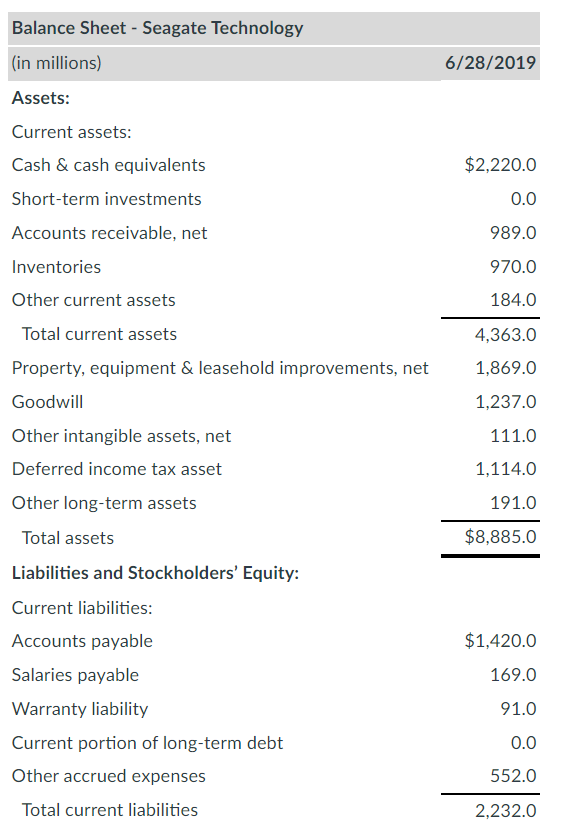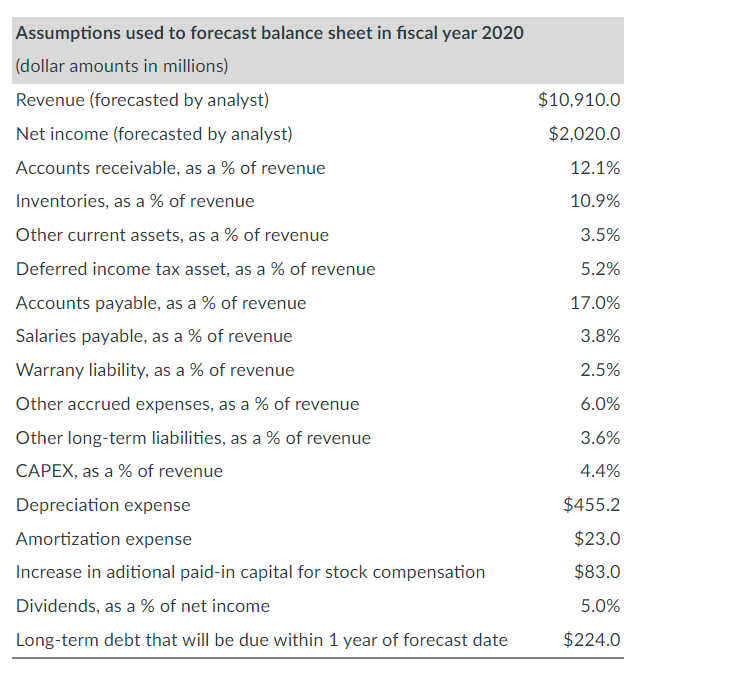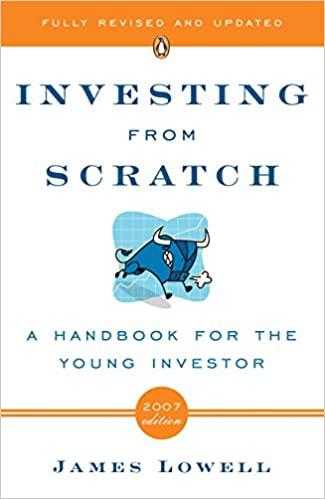




An analyst provides the following assumptions used to forecast balance sheet amounts in year 2020 . Assume 'no change' for accounts not listed. Assume that all capital expenditures are purchases of property, plant and equipment (PP\&E), and that no PP\&E assets are sold or retired during years 2019 or 2020 . Note that forecasts of revenue and net income (calculated by the analyst) are provided below and should be used in your forecast of the balance sheet. \begin{tabular}{lr} Assumptions used to forecast balance sheet in fiscal year 2020 & \\ (dollar amounts in millions) & $10,910.0 \\ \hline Revenue (forecasted by analyst) & $2,020.0 \\ Net income (forecasted by analyst) & 12.1% \\ Accounts receivable, as a \% of revenue & 10.9% \\ Inventories, as a \% of revenue & 3.5% \\ Other current assets, as a \% of revenue & 5.2% \\ Deferred income tax asset, as a \% of revenue & 17.0% \\ Accounts payable, as a \% of revenue & 3.8% \\ Salaries payable, as a \% of revenue & 2.5% \\ Warrany liability, as a \% of revenue & 6.0% \\ Other accrued expenses, as a \% of revenue & 3.6% \\ Other long-term liabilities, as a \% of revenue & 4.4% \\ CAPEX, as a \% of revenue & $455.2 \\ Depreciation expense & $23.0 \\ Amortization expense & $83.0 \\ Increase in aditional paid-in capital for stock compensation & 5.0% \\ \hline Dividends, as a \% of net income & $24.0 \\ \hline \end{tabular} Use the information above to prepare a forecasted balance sheet for fiscal year 2020 . Then, answer the following questions. Calculate the forecasted amount of property, equipment, \& leasehold improvements, net for 2020. Calculate the forecasted amount of other intangible assets, net for 2020. Calculate the forecasted amount of long-term debt (less current portion) for 2020. Calculate the forecasted amount of retained earnings (accumulated deficit) for 2020. Calculate the forecasted amount of total liabilities and equity for 2020. Calculate the forecasted amount of cash \& cash equivalents for 2020. An analyst provides the following assumptions used to forecast balance sheet amounts in year 2020 . Assume 'no change' for accounts not listed. Assume that all capital expenditures are purchases of property, plant and equipment (PP\&E), and that no PP\&E assets are sold or retired during years 2019 or 2020 . Note that forecasts of revenue and net income (calculated by the analyst) are provided below and should be used in your forecast of the balance sheet. \begin{tabular}{lr} Assumptions used to forecast balance sheet in fiscal year 2020 & \\ (dollar amounts in millions) & $10,910.0 \\ \hline Revenue (forecasted by analyst) & $2,020.0 \\ Net income (forecasted by analyst) & 12.1% \\ Accounts receivable, as a \% of revenue & 10.9% \\ Inventories, as a \% of revenue & 3.5% \\ Other current assets, as a \% of revenue & 5.2% \\ Deferred income tax asset, as a \% of revenue & 17.0% \\ Accounts payable, as a \% of revenue & 3.8% \\ Salaries payable, as a \% of revenue & 2.5% \\ Warrany liability, as a \% of revenue & 6.0% \\ Other accrued expenses, as a \% of revenue & 3.6% \\ Other long-term liabilities, as a \% of revenue & 4.4% \\ CAPEX, as a \% of revenue & $455.2 \\ Depreciation expense & $23.0 \\ Amortization expense & $83.0 \\ Increase in aditional paid-in capital for stock compensation & 5.0% \\ \hline Dividends, as a \% of net income & $24.0 \\ \hline \end{tabular} Use the information above to prepare a forecasted balance sheet for fiscal year 2020 . Then, answer the following questions. Calculate the forecasted amount of property, equipment, \& leasehold improvements, net for 2020. Calculate the forecasted amount of other intangible assets, net for 2020. Calculate the forecasted amount of long-term debt (less current portion) for 2020. Calculate the forecasted amount of retained earnings (accumulated deficit) for 2020. Calculate the forecasted amount of total liabilities and equity for 2020. Calculate the forecasted amount of cash \& cash equivalents for 2020











